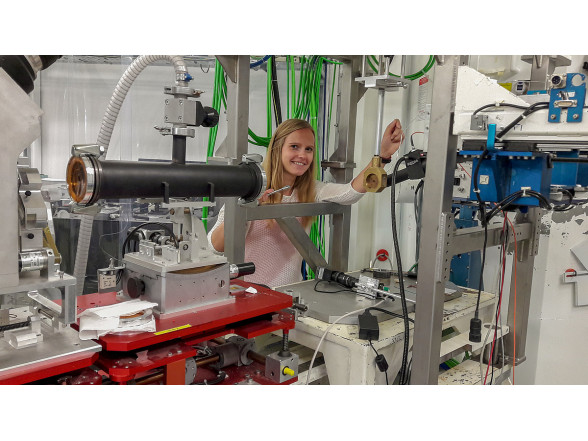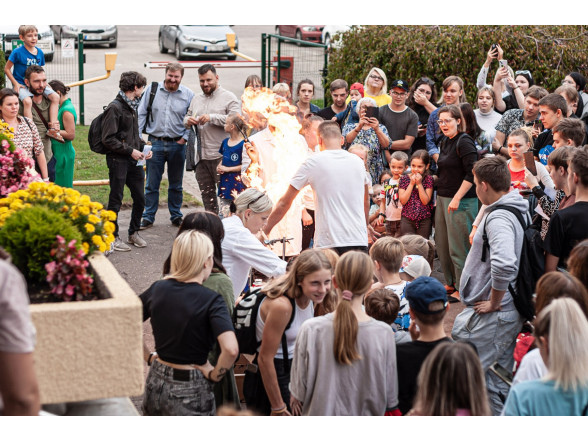Researcher at the EXAFS Spectroscopy Laboratory of the ISSP UL, Dr.phys. Inga Pudža was a guest at an hour-long Radio Naba program, “Zinātnes vārdā” (In the Name of Science), which allows its listeners to learn about the research of Latvian scientists, their achievements and challenges in a way that is understandable and exciting for everyone.
In the program, Inga Pudža talks about the work of EXAFS Spectroscopy Lab and what scientists do there. She explains that they study how X-rays interact with different materials. Lately, the research in this field has brought significant success: in 2022, EXAFS Lab scientists received the Latvian Academy of Sciences award for one of the best achievements in Latvian science. Inga Pudža reveals that the major experiments have been performed outside Latvia, mostly in German synchrotrons or particle accelerators. Researchers use a synchrotron line to irradiate powdered samples and thus learn a lot about their atomic structure - how atoms arrange themselves and interact.
Inga focuses on fundamental research to understand the phenomenon and find regularities. The materials she studies have a practical application - they can be implemented in various devices. Usually, researchers find a material of interest (for example, a material that changes color) and then try to determine why it does so or if it can be modified to change color at a specific temperature.
The young researcher also talks about her doctoral thesis on copper molybdate. It is a multifunctional material with several promising properties; for example, it changes its color under the influence of temperature, pressure, and pH. The aim was to investigate and explain the relationship between complex molybdate-based materials’ structural and functional properties. The research results’ application is diverse, including using this durable and inexpensive material as a temperature indicator to control storage and transport conditions for products sensitive to certain temperatures, such as vaccines, chemicals, food, etc.
Asked where the research ideas come from, Inga replies that they come from reading scientific literature, finding what is relevant, and filling in the blind spots considering competencies the researcher or the lab possesses. Inga also explains that physicists can look at their problems from the outside, more broadly. The main drive is understanding how things work and how the world is built.
Inga says that her work is mainly fundamental research. Sometimes she needs to think as an engineer, and she sometimes also has to become a writer and an artist because the research must be presented to scientists and a wider audience. Inga would advise the listeners to think like a physicist - not to tackle a big problem, but to divide it and solve the small problems separately while also solving the big one.
The radio program in Latvian



